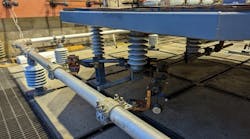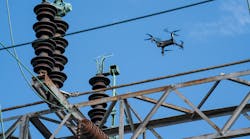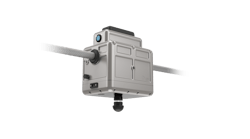During the fall of 2022, KEMA Labs in Chalfont, Pennsylvania, finished improvements to its test platform for surge arresters. The platform now meets the requirements outlined in IEEE C62.11, IEC 60099-4, and IEC 60099-8, covering aspects such as test sample placement, arc diversion, and the different test setups needed for different types of surge arrestors.
Significant upgrades have been implemented: The main feed bus, which is crucial for energy delivery during tests, has been enhanced. Modifications have been made to the base pedestal—where the arrestor is mounted—and to the dimensions of the test base surface. Furthermore, the enclosure is now constructed from non-metallic materials, a strategic decision to ensure that the arc remains concentrated on the test object throughout the testing process.
During the recent upgrades, a key area of focus was enhancing the magnetics during the arc shot process. It's crucial that the arc energy is precisely directed at the test object during experiments. To facilitate this, the test platform has been upgraded with a main feed bus that descends from above. This bus features adjustable height, enabling it to accommodate surge arrestors of various sizes.
Additionally, the solid aluminium connection on the main feed bus has been reinforced with diagonal braces and securely anchored to the walls. This design is intended to significantly reduce the forces exerted on the test sample during high-current shots, thereby improving the accuracy and safety of the testing process.
A return bus was also integrated to envelop the base platform, ensuring an even distribution of magnetics during testing. This minimizes the impact of the setup and concentrates the arcing energy on the test sample.
Significant enhancements have been made with the introduction of a double 45-in. return connection on the return bus. This design ensures the elimination of any lateral forces on the base pedestal. The setup is versatile, allowing return connections on both the front and back of the platform to accommodate various surge arrestor configurations, including both porcelain and polymer types.
The use of heavy-duty aluminium connections is a strategic choice, offering a lightweight yet robust solution capable of handling extreme high-current testing.
For pre-failure testing, a Cleaveland Price 2-way high-current switch is employed. Positioned between the arrester test setup and the main bus in the test cell, this switch ensures an almost instantaneous switch-over from the pre-failure circuit at rated voltage to the short circuit supply. The pre-failing process is conducted at rated voltage using a high-voltage transformer, equipped with live voltage and current monitoring. This allows for precise determination of the exact moment of pre-failure.


